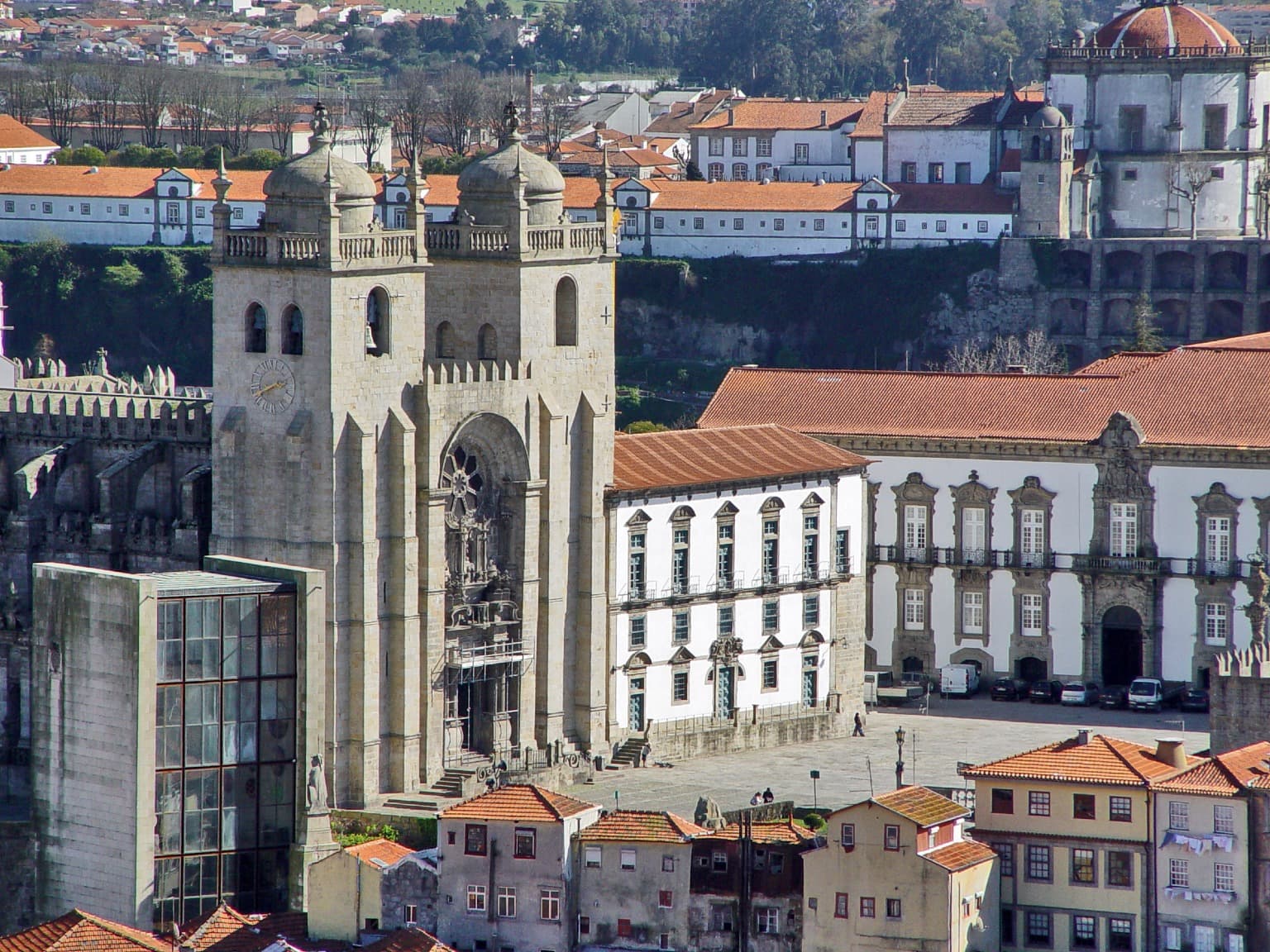Exploring Porto's Architectural Heritage
August 21, 2024
Porto has long been recognized as a city of architects, home to famous names such as Álvaro Siza Vieira, Eduardo Souto Moura, Fernando Távora, and José Marques da Silva, among others. Its architecture school also stands out for its high standards, dynamism, and more avant-garde tendencies, while respecting local traditions and the quality of the surrounding landscape.

The Sé do Porto, one of Portugal's oldest and most important monuments, was built between the 12th and 13th centuries in Romanesque style, later incorporating Gothic and Baroque influences.
When discussing architecture in Porto, it's not just about recent buildings or the recent past. It takes us on a journey through time, back to the 12th century, or even before that, to the presence of the Romans who gave the city the name "Portus Cale," which subsequently influenced the name of the nation, Portugal. Let's start this architectural journey by talking about the imposing Sé do Porto, located in the heart of this historical city, one of Portugal's oldest and most important monuments. Its construction began in the first half of the 12th century and continued until the beginning of the 13th century. This first building, in Romanesque style, underwent many changes over the centuries, including Gothic and Baroque influences. A curiosity about this Romanesque period, as well as the Gothic, is that it is an architectural heritage indelibly associated with the beginning of Portuguese nationality, since noble families who helped the first kings in the Christian Reconquest of what is now Portugal lived here.
_(cropped).jpg&w=3840&q=75&dpl=dpl_13RM2AD7yPwTh6hzBgGrHwmkcZvT)
Igreja e Torre dos Clérigos, designed by the Italian architect Nicolau Nasoni, the great promoter of the Baroque style in the city.
From here, we move forward to the 17th and 18th centuries, when the city adopted a new architectural trend: the Baroque style, a clear reaction to the Catholic Counter-Reformation. This period is marked by the construction of notable churches and buildings, such as Palácio do Freixo, Igreja e Torre dos Clérigos, and Igreja da Misericórdia, designed by the Italian architect Nicolau Nasoni, the great promoter of the Baroque style in the city. This leads us to the 19th and 20th centuries, when the city experienced a wave of modernization and cosmopolitanism, absorbing the influences of the Belle Époque. During this period, the city saw the construction of several important buildings, such as the emblematic Estação de São Bento, famous for its tile panels narrating the history of Portugal, the headquarters of BBVA (Banco Bilbao Vizcaya Argentaria), as well as several coffee shops, such as Café Majestic, and bookshops, such as the famous Livraria Lello, often cited as one of the most beautiful bookshops in the world.

The renowned Livraria Lello, frequently hailed as one of the world's most beautiful bookstores.
In the 20th and 21st centuries, we have seen the emergence of several groundbreaking architectural landmarks that have received international acclaim for their avant-garde designs. Among these buildings are the Terminal de Cruzeiros do Porto de Leixões, Casa da Música, Teatro Nacional S. João, Torre do Burgo, the Reitoria da Universidade do Porto, Câmara Municipal do Porto, the Edifício Vodafone, among many others. These structures represent a unique blend of innovative design and functionality, showcasing the architectural prowess that defines the city of Porto.
.jpg&w=3840&q=75&dpl=dpl_13RM2AD7yPwTh6hzBgGrHwmkcZvT)
The iconic Estação de São Bento, renowned for its tile panels depicting the history of Portugal.
Porto's architecture serves as a living narrative, recounting the city's history across different periods. From its early medieval beginnings to its confrontations with the complexities of modernity, Porto has demonstrated an impressive capacity for adaptation while retaining its distinctive essence. Every stone, every contour of its edifices, constitutes a compelling page in an ongoing saga that not only reflects the city's illustrious past but also encapsulates its dynamic present and promising future.
.jpg&w=3840&q=75&dpl=dpl_13RM2AD7yPwTh6hzBgGrHwmkcZvT)
Casa da Música, a striking example of innovative design and functionality, highlights the architectural excellence that characterizes Porto.